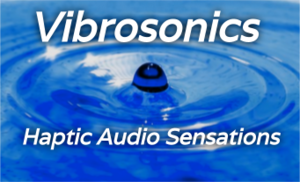
College of Engineering Unit:
Vibrosonics - Computer Science Team Page
The Mission
Sound has always been an extremely prevalent aspect of entertainment and communication in both digital media and in the real world. Consequently, those hard of hearing end up unable to fully participate in a myriad of experiences normally taken for granted. Vibrosonics seeks to enable these people to experience sound using their sense of touch. More specifically, Vibrosonics intends to communicate sound using felt vibrations at dynamic frequencies and intensities to reflect a wide range of audio.
The Means
Wearable as a small, thin backpack, the Vibrosonics device can take real time audio input and create vibrations that can be felt on the back. These vibrations are reflective of the sound the device hears—as the incoming audio changes in volume and pitch, so too will the vibrations change in intensity and frequency.
Most notably, extra emphasis has been placed on several key aspects of the output. First, work was done with a focus on making sure a sizable range of sound frequencies could be picked up and reflected in the vibrations. Secondly, algorithms responsible for the vibrational output have been experimented with to encourage multiple components of the incoming audio to be distinguishable rather than have a single predominant signal drown the others out. Lastly, but not least, a balance between output fidelity and a low output latency was carefully considered to ensure the device feels both responsive and accurate. These factors were all focal points when developing the hardware algorithms to ensure that most meaningfully perceivable sounds are effectively communicated to the user.
The Teams
This project was authored and is headed by Dr. Chet Udell, director of the Oregon State University OPEnS Lab. The project as a whole was the work of three teams of different engineering disciplines: an electrical engineering, computer science, and mechanical engineering team all took part in different components.
We would also like to give a special thanks to Cymaspace to offering to sponsor this project and providing feedback during development!
Project Website(s):
Industry Sponsor(s):
| Attachment | Size |
|---|---|
| 111.48 KB |